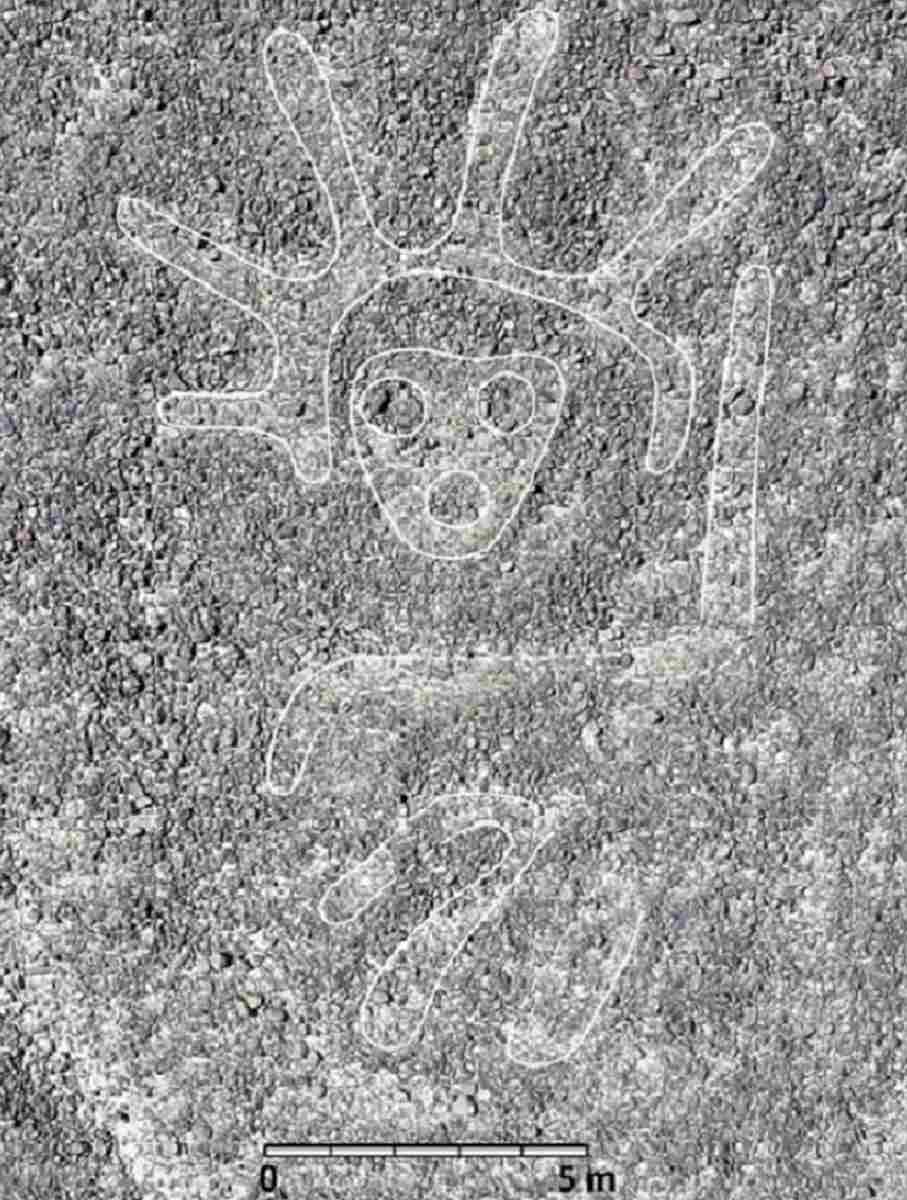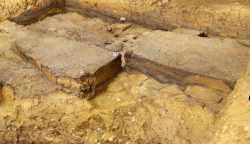
A newly identified human-shaped Nazca Lines geoglyph
12:02 JST, September 26, 2024
YAMAGATA (Jiji Press) — Yamagata University said Tuesday that it has newly identified 303 Nazca Lines geoglyphs in southern Peru.
The national university, which has a research institute focused on the World Heritage drawings, also said that the Nazca Lines are highly likely to have been created for the purposes of rituals and information sharing.
The findings were published in the U.S. journal Proceedings of the National Academy of Sciences the same day.
Yamagata University identified the geoglyphs using artificial intelligence technology in cooperation with IBM Research of the United States. Researchers found the drawings through field surveys conducted from September 2022 and February 2023 of sites selected with the AI technology from aerial photographs.
This method led to a significant reduction in time compared with the conventional method of finding sites with the naked eye, the university said.
Masato Sakai, professor of cultural anthropology and Andean archaeology at the university, and others used the AI technology also to analyze the scale and distribution of geoglyphs that had already been discovered.
They found that large-scale line geoglyphs around 90 meters in length on average mostly depicting wild animals were drawn near pilgrimage routes to temples, leading them to believe that the geoglyphs were drawn for community-level rituals.
The newly discovered geoglyphs were smaller, averaging around 9 meters in size. They depict humans, human heads and livestock using rocks arranged on a plane. The smaller geoglyphs, often found near a small path, are believed to have been created by individuals and small groups to share information about rituals and livestock.
"Science & Nature" POPULAR ARTICLE
-

Genome Study Reveals Milestone in History of Cat Domestication
-

Big Leap in Quest to Get to Bottom of Climate Ice Mystery
-

Security Camera Footage Vulnerable to Outside Access; Investigation Finds 3,000 Pieces Exposed Online
-

Paws on Parade: Nairobi’s Dogs Dazzle at ‘Pawchella’
-

Japan Set to Participate in EU’s R&D Framework, Aims to Boost Cooperation in Tech, Energy
JN ACCESS RANKING
-

Keidanren Chairman Yoshinobu Tsutsui Visits Kashiwazaki-Kariwa Nuclear Power Plant; Inspects New Emergency Safety System
-

Imports of Rare Earths from China Facing Delays, May Be Caused by Deterioration of Japan-China Relations
-

University of Tokyo Professor Discusses Japanese Economic Security in Interview Ahead of Forum
-

Tokyo Economic Security Forum to Hold Inaugural Meeting Amid Tense Global Environment
-

Japan Pulls out of Vietnam Nuclear Project, Complicating Hanoi’s Power Plans























